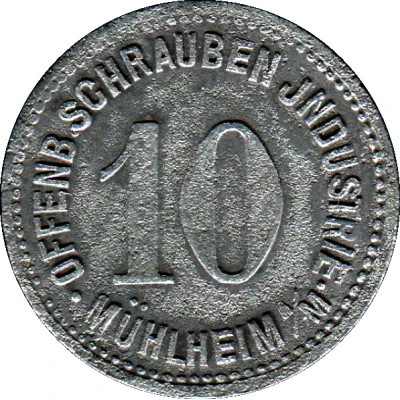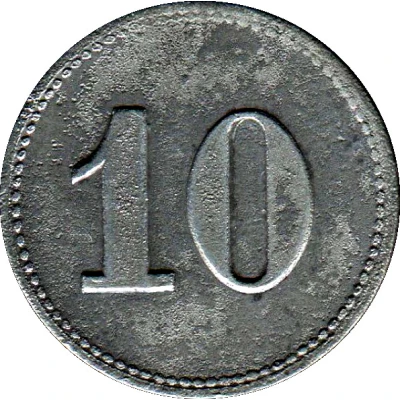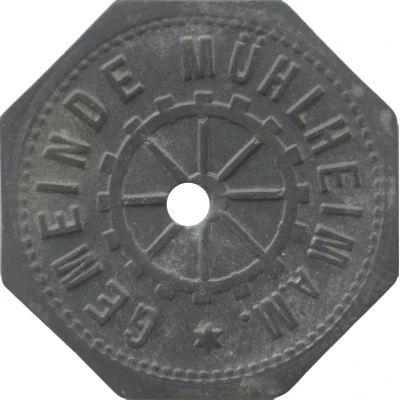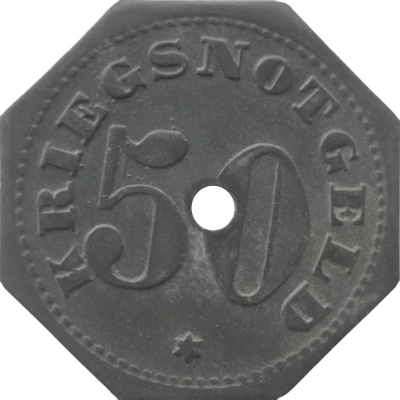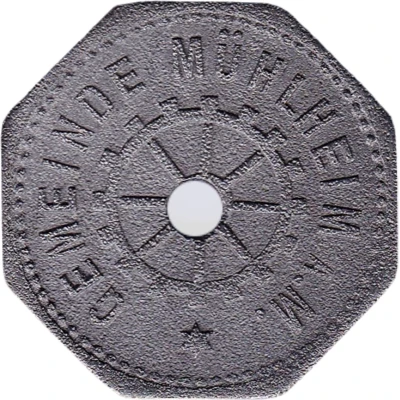
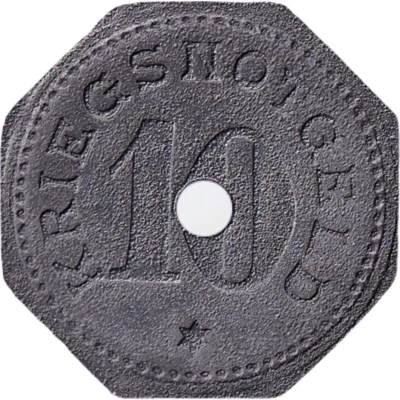

© gyoschak (CC BY-NC-SA)
10 Pfennigs - Mühlheim am Main ND
1917 year| Zinc | 1.73 g | 20 mm |
| Issuer | Municipality of Mühlheim am Main (Federal state of Hesse) |
|---|---|
| Emperor | William II (Wilhelm II) (1888-1918) |
| Type | Standard circulation coin |
| Year | 1917 |
| Value | 10 Pfennigs (10 Pfennige) (0.10) |
| Currency | Mark (1914-1924) |
| Composition | Zinc |
| Weight | 1.73 g |
| Diameter | 20 mm |
| Thickness | 1.0 mm |
| Shape | Octagonal (8-sided) with a hole (2.5mm hole) |
| Technique | Milled |
| Orientation | Medal alignment ↑↑ |
| Demonetized | Yes |
| Updated | 2024-10-04 |
| Numista | N#390168 |
|---|---|
| Rarity index | 94% |
Reverse
Pearl rim, legend surrounding denomination.
Script: Latin
Lettering:
KRIEGSNOTGELD
10
✶
Edge
Plain
Interesting fact
The 10 Pfennigs - Mühlheim am Main ND (1917) coin was issued during a time of economic turmoil in Germany, known as the "Inflationary Period" (1914-1923). During this time, the value of the German mark (the national currency) plummeted, and prices for everyday goods skyrocketed. As a result, many Germans turned to alternative forms of currency, such as local coins like the 10 Pfennigs - Mühlheim am Main ND (1917), which were issued by municipalities and private companies. These coins were often made of cheaper materials, like zinc, and had a lower face value than the official German currency. Despite their low value, these coins played an important role in the local economies of the time, allowing people to continue buying and selling goods and services despite the inflationary crisis.
